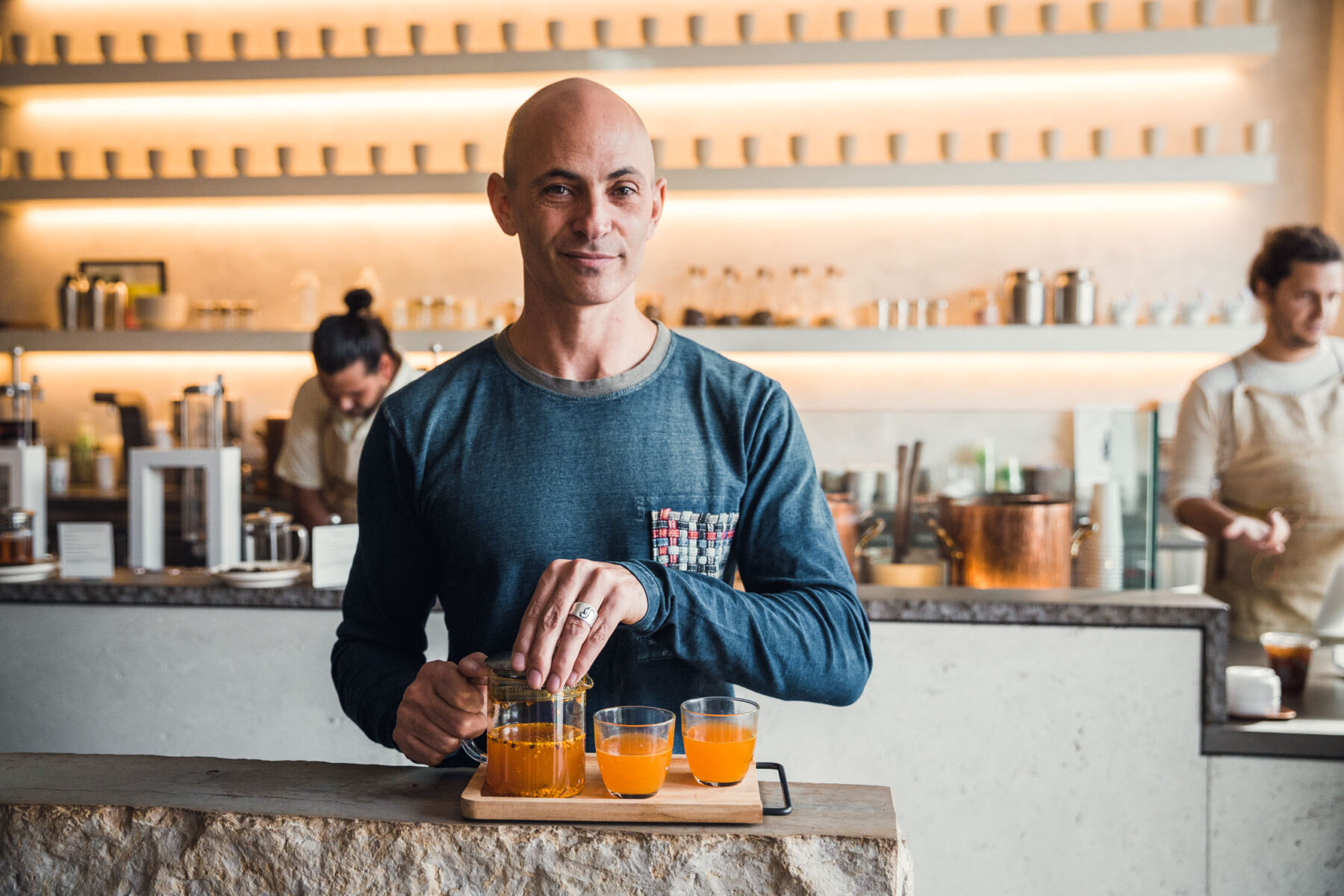‘Future craft’ is the term Jesse Jacobs uses to describe the concept behind his latest Samovar Tea shop, which elevates the ancient art of preparing tea with sleek, hyper-modern brewing devices. It’s the kind of contraption that is strange and novel enough to be a mesmerizing objet d’arte, but precise and functional enough to be a useful machine.
The tea bar is outfitted with bubbling glass crucibles, temperature-controlled pistons and Android tablets, alongside freshly baked scones and steaming copper pots of spicy chai. The aroma of cardamom, ginger, cloves, and cinnamon spills out onto the sidewalk, stirring up reveries of an otherworldly realm. The shop is striking in its starkness, its austerity a consequence of absence: white walls, concrete benches, clay cups lining the edges of floating shelves, and smooth surfaces.
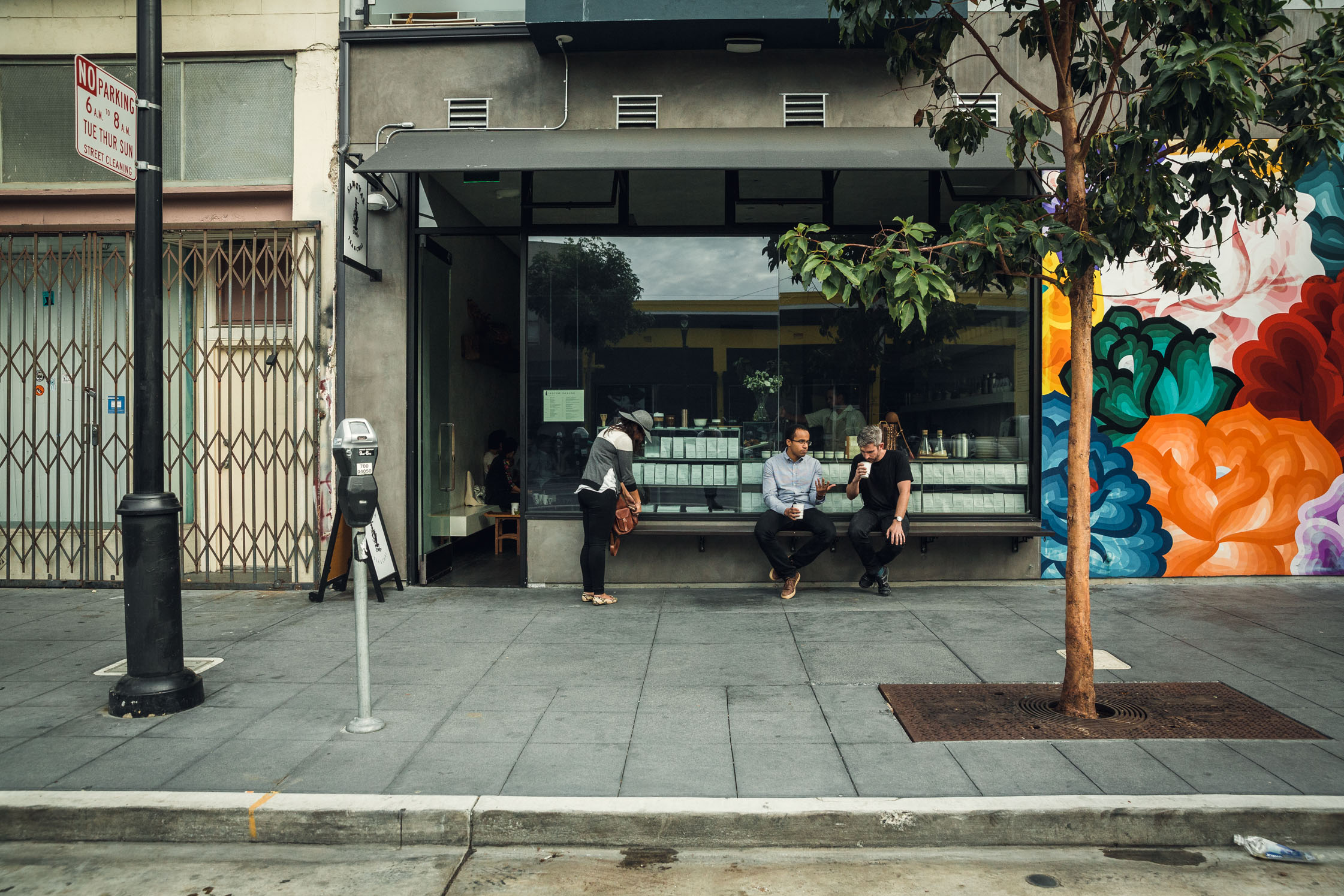
Today Jesse is brewing an herbal tea called Turmeric Spice, which he describes as “full-bodied with subtle ginger heat, earthy notes of turmeric and a sweet citrusy finish.” With the tablet-controlled glass crucible, the precision required for a perfect brew is easily achieved: filtered water brewed with exactly seven grams of tea at 195 degrees, which is the optimal temperature for this particular herbal blend. Jesse programs the tablet, and the water starts bubbling in the crystalline cylinder. When it hits its target temperature, the tea leaves are released and begin to swirl throughout. As the pressure increases, the flurry swells for a few more seconds, and then the leaves begin to drain out. The whole process is a nuanced orchestration, a series of sleek and rhythmic movements. We are left with a honey-gold elixir, which is poured into small clay teacups to enjoy. First we smell, and then we sip.
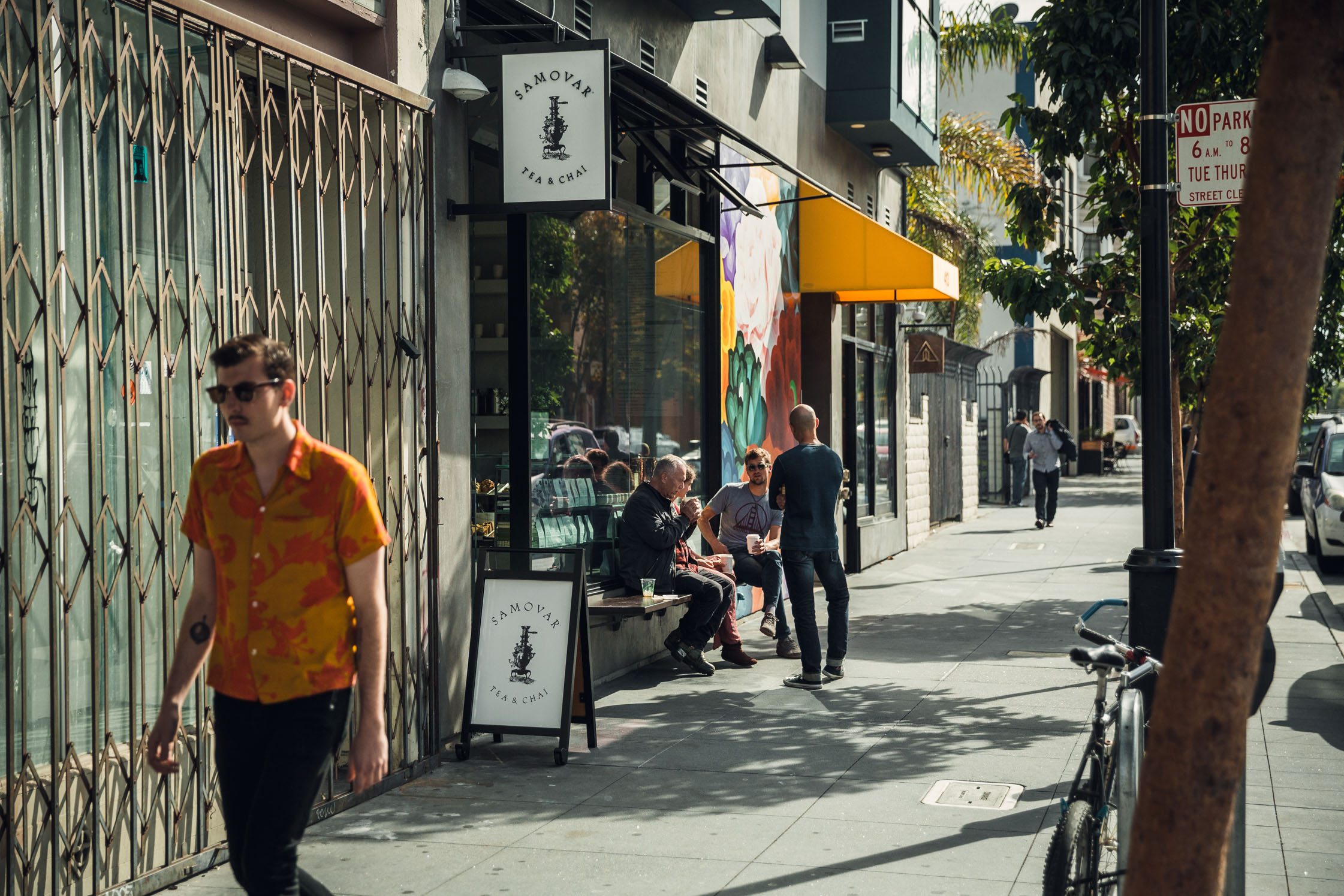
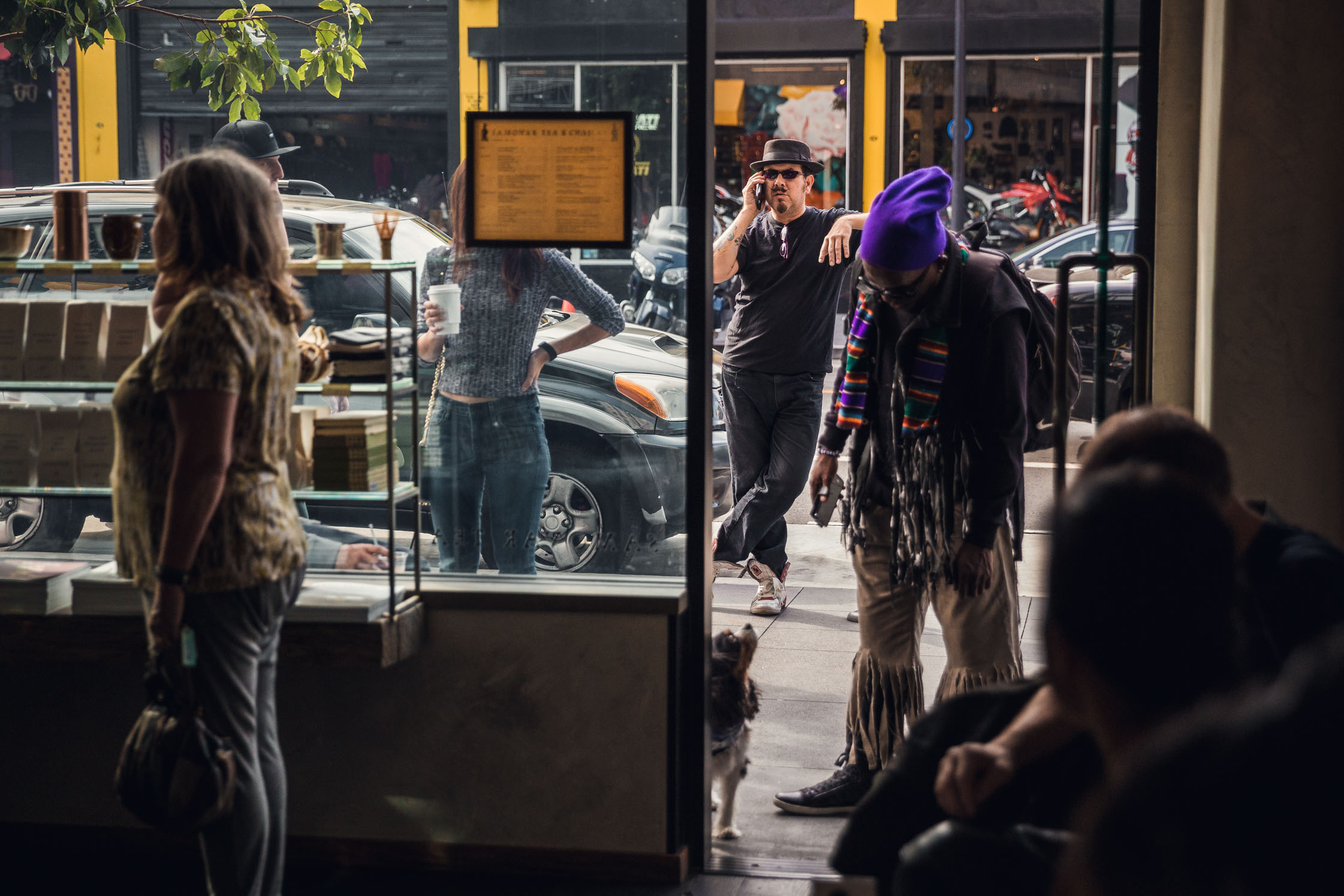
-
Where did you grow up and what’s your story?
I grew up in Boston as the oldest of five kids. My parents were very inspiring and encouraged me to seek out new experiences and opportunities. We didn’t have a lot of resources, which meant getting whatever kind of job was available. So I ended up working as a cook, dishwasher, waiter, shoe-shine boy, magician and janitor.
When I moved out here, I got into the corporate tech world, which was a great experience, but eventually the corporate grind wore on me. I knew there had to be a better way. I started thinking about what people need. They needed to disconnect from the day-to-day grind and connect more with each other. But how could I make that into a business? I realized there was nothing happening in the tea industry, so we opened Samovar about 12 years ago in the Castro, and since then opened three other locations, this being the fourth.
-
What was the concept behind the store?
I realized that what people want is craft, authenticity, ease, and quality. These days, there is a cognitive overload, a deluge of information. As a result, you don’t want 100 choices of tea anymore; you want three. So how do we make brewing tea fast and easy while elevating its quality? Coffee has been elevated, so why not do the same with tea?
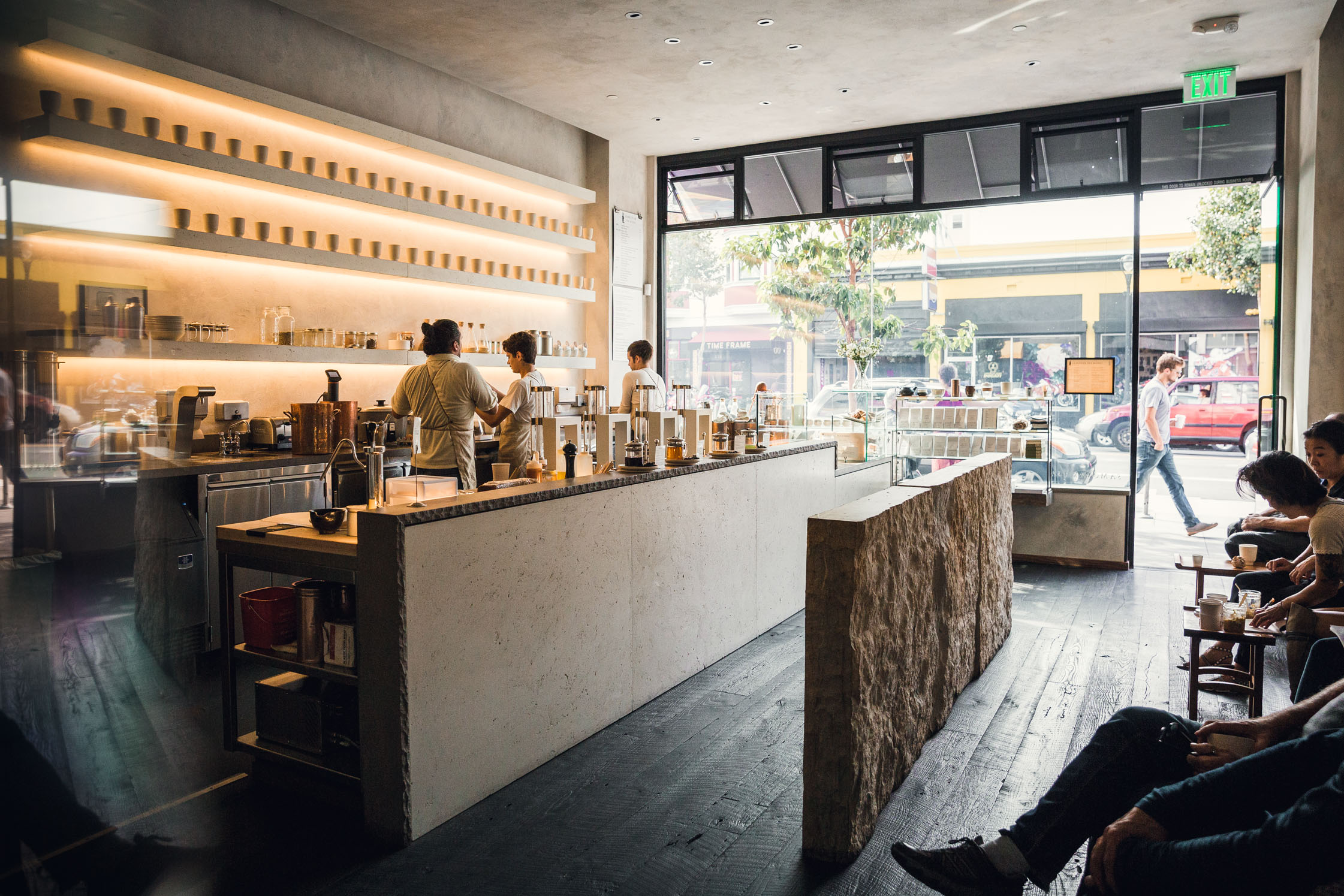
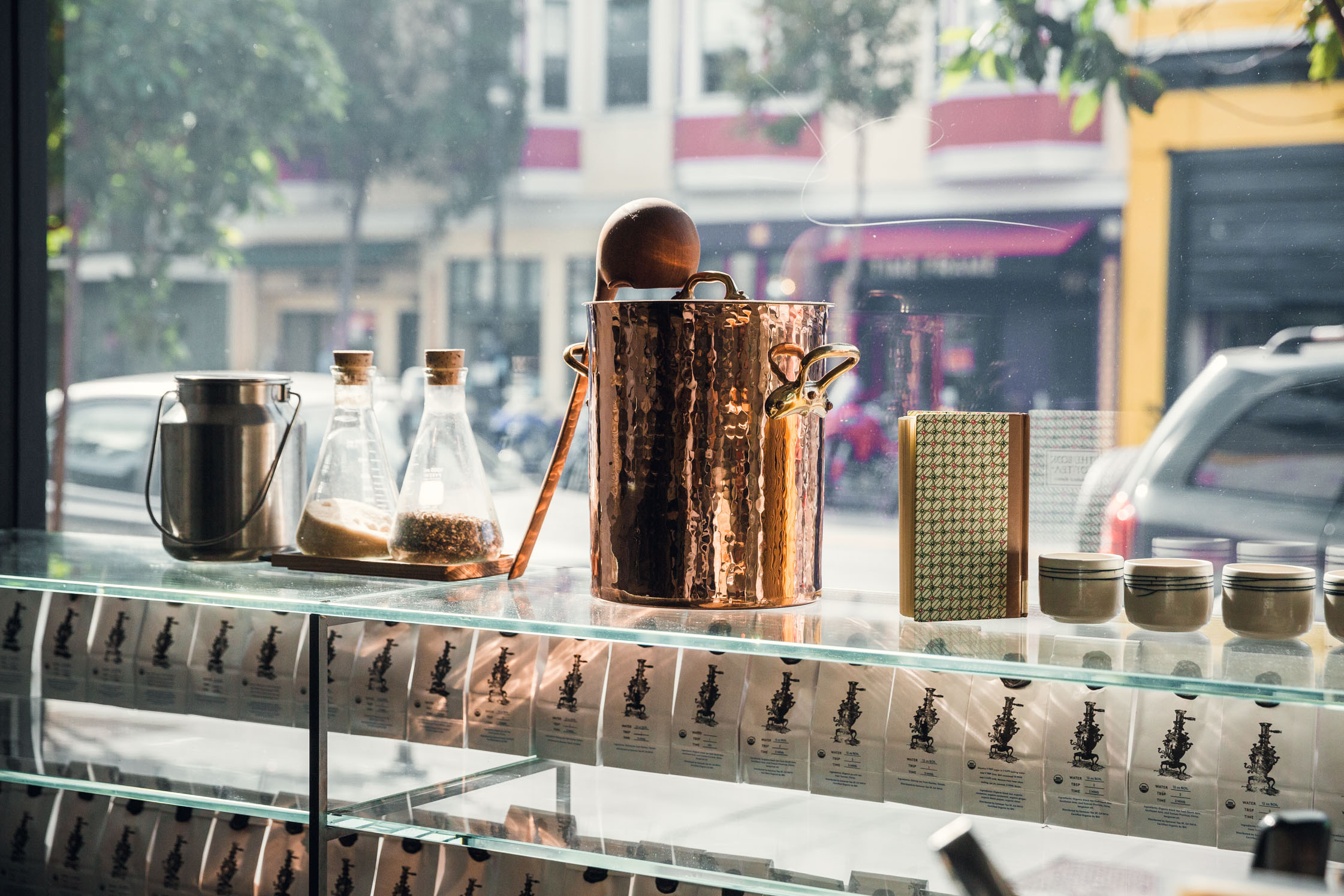
“The question is how do you make tea accessible so that the housewife, the college kid, the tech worker and the sophisticated foodie can all grasp it and get it – that was the opportunity.”
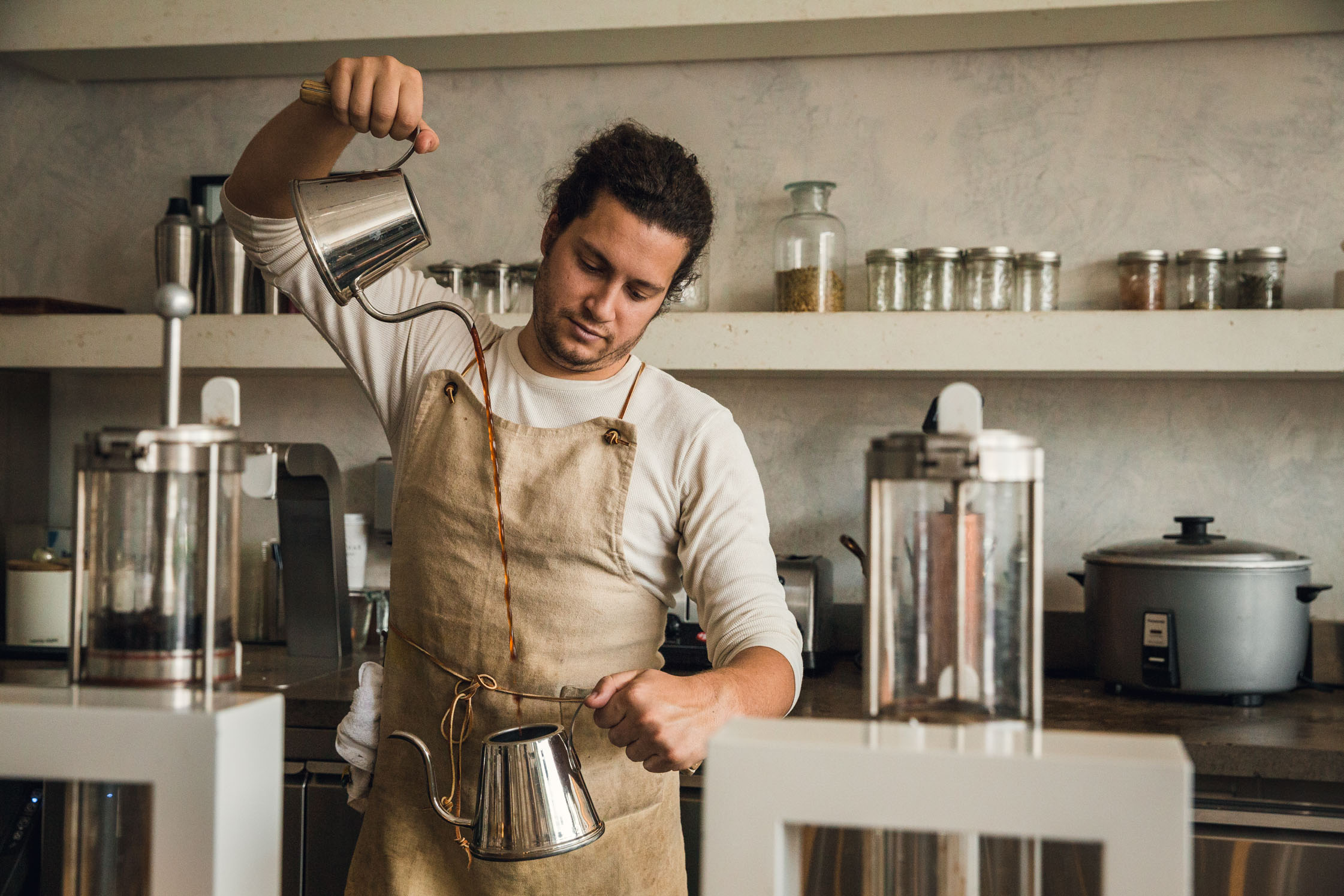
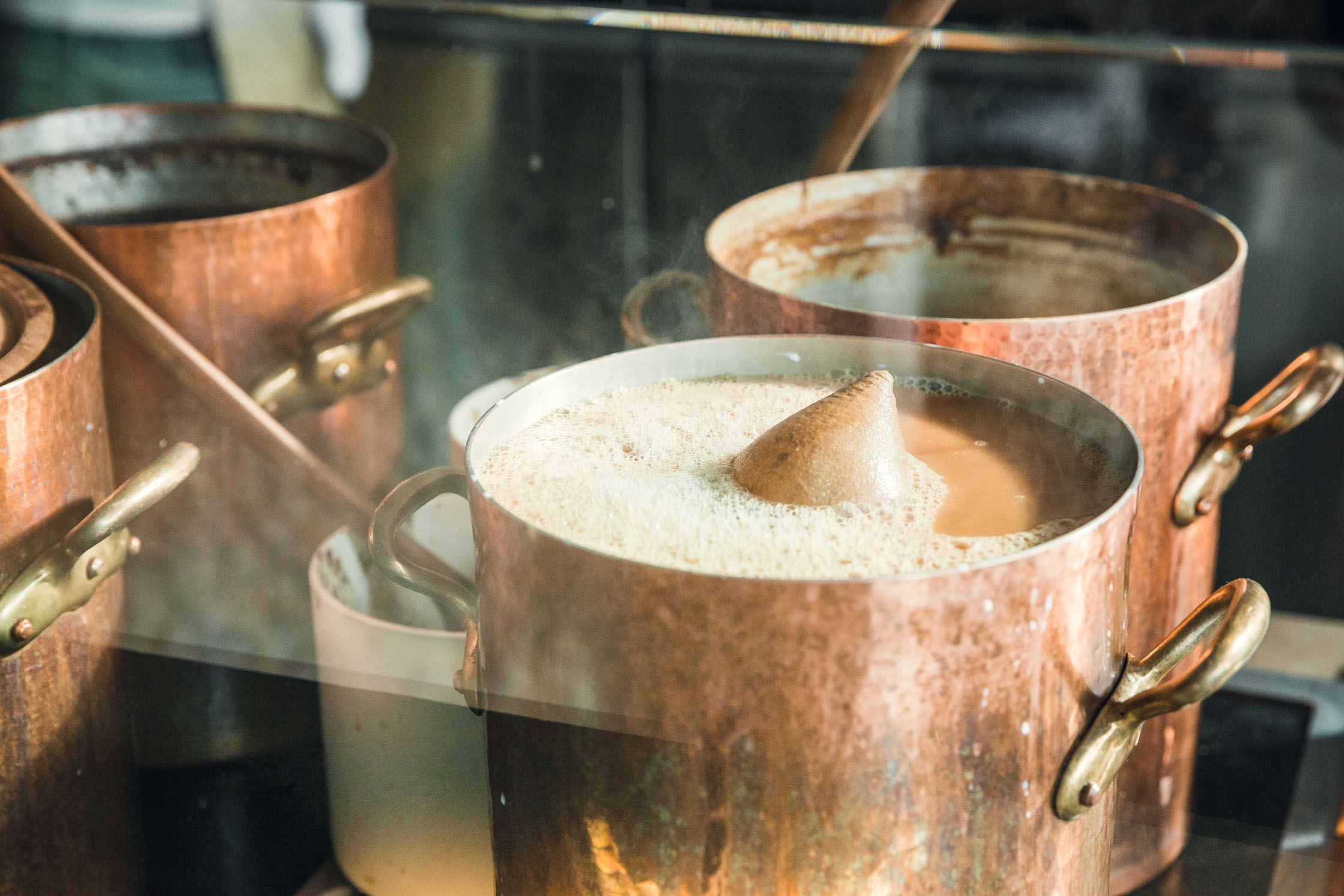
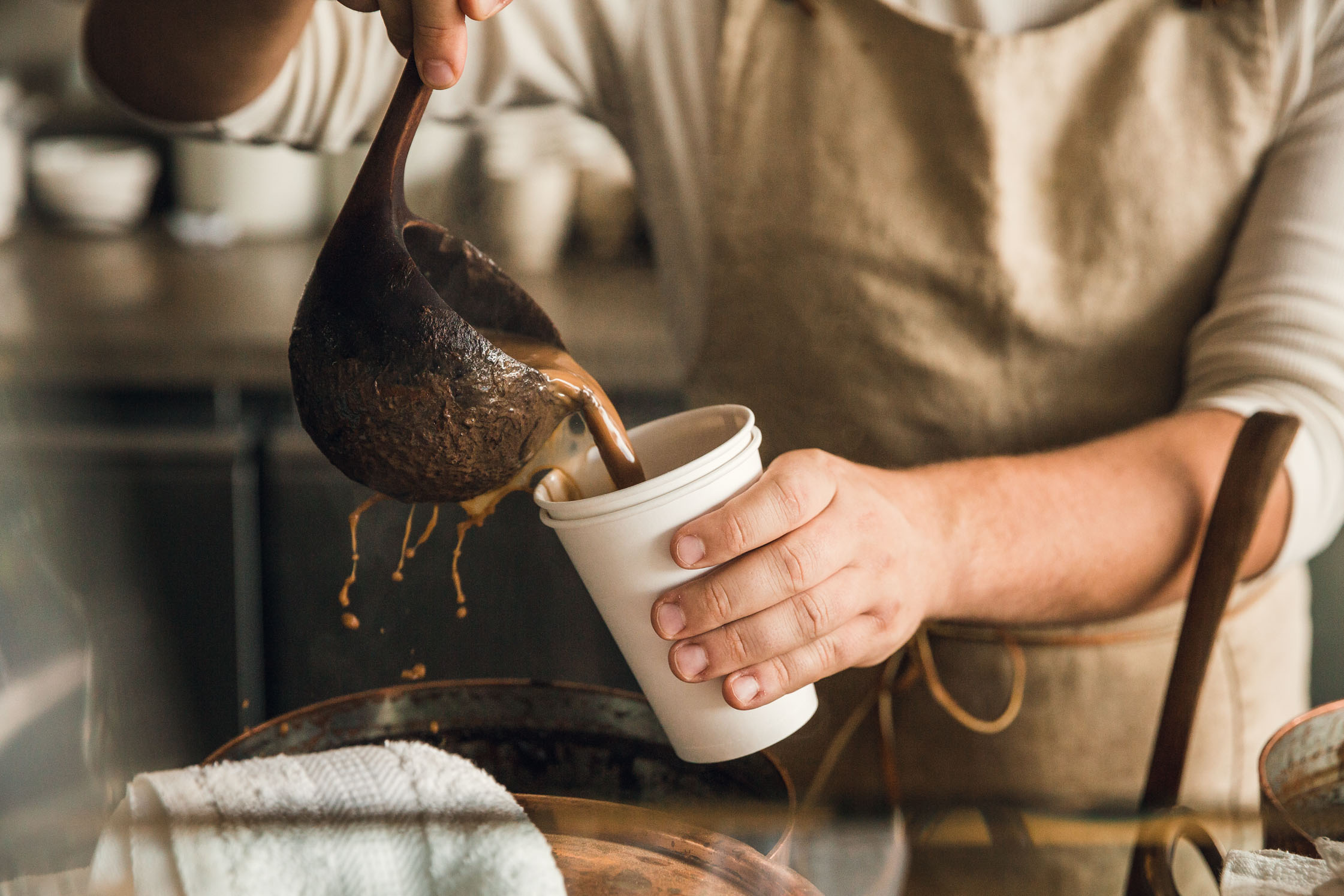
-
This store is a departure from your other locations. It has more of a coffee shop, to-go vibe?
Totally. In my mind it’s not about re-creating a coffee shop – it’s what you distill a coffee shop down to, which is utilitarian and democratic. Historically, a big problem with tea is that it’s too complicated, the preparation takes too much time, too much ritual and too much expertise. The question is how do you make tea accessible so that the housewife, the college kid, the tech worker and the sophisticated foodie can all grasp it and get it – that was the opportunity.
-
How did you learn about the art of tea? What do you love about it?
Just by brewing it. In a sense, tea is so simple. It’s just leaves and water.
-
Where do you source your tea?
We’ve spent the last 12 years working with farms and small family operations all over the world, in Japan, China, Korea, and South Africa. We work with people who have integrity, who care about the quality of their product. We wholesale to cafes and restaurants because they come to us for having curated the best teas.
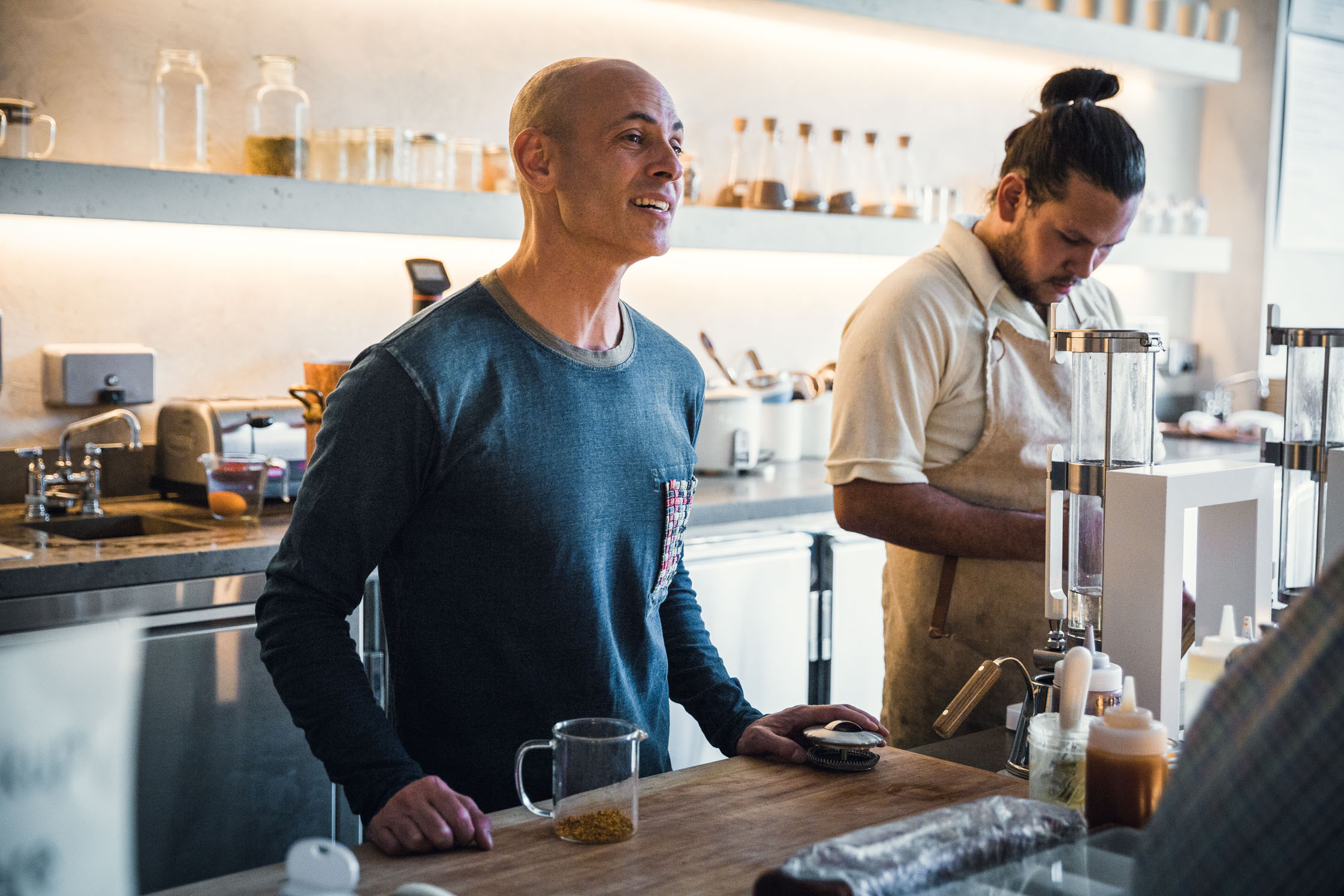
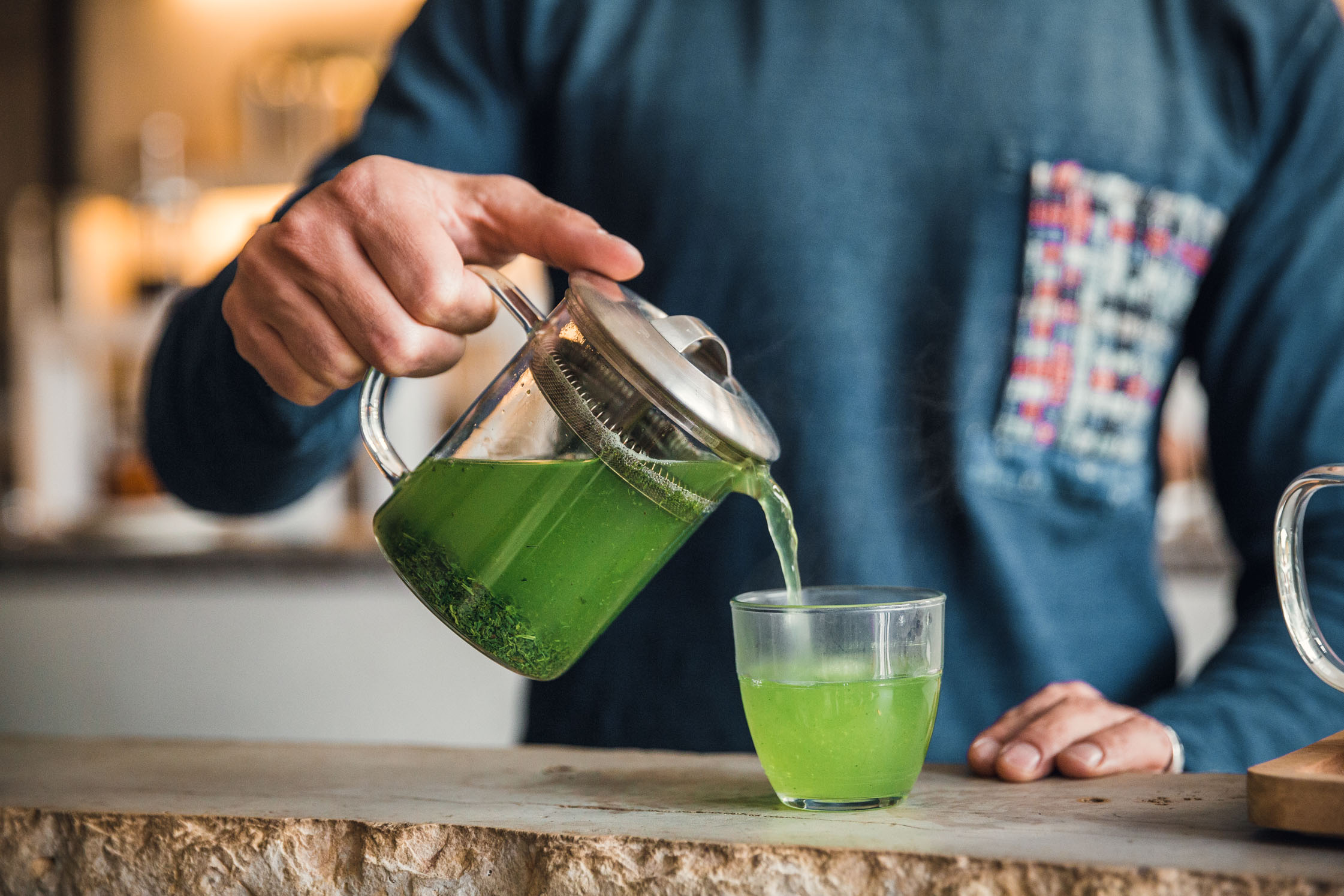
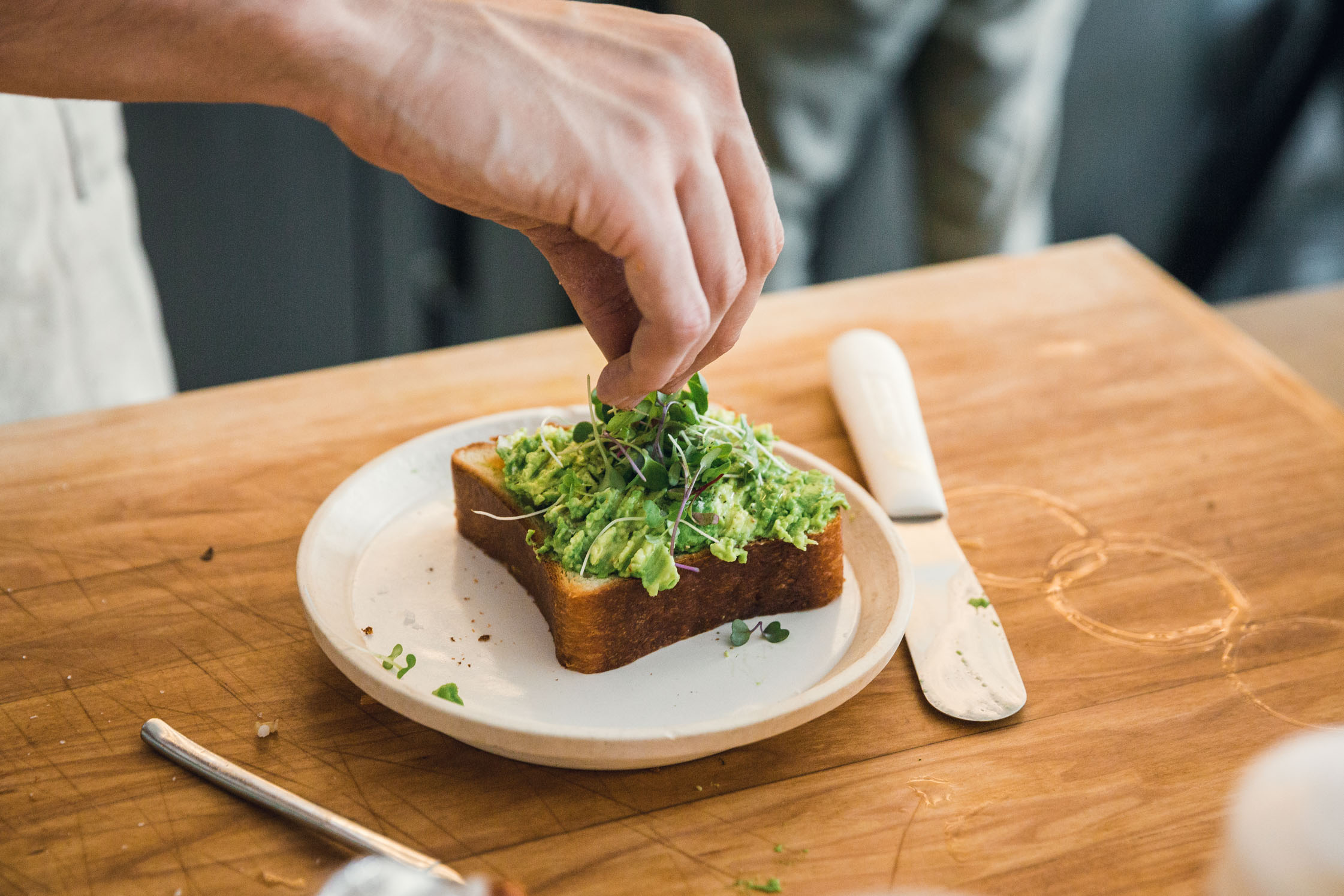
“Tea has never been so accessible and utilitarian.”
-
I’m really curious about the design aesthetics of your shop. Can you talk a little about where you sourced these beautiful objects?
For me, the aesthetics depart from the notion that tea is precious. Most people experience tea as a droopy, wet, cold tea bag. We want to show that tea actually has an inherent integrity and potency, a substantial nature. That’s why our design focuses on authenticity, simplicity, accessibility, and connection to the natural world. These are the core values of Samovar.
I’ve always been interested in the feng shui world, the Chinese notion of five elements, so we really touched every element: wood, fire, water, earth and metal.
-
How do you convey that?
We started with a cup, which we spent a year designing, working closely with a local husband-wife team called Atelier Dion in Oakland. Their cups have become design features as well as functional objects, and we wanted something that was beautiful and practical. Form and function work together. When our customers drink our tea, it literally becomes a part of them. Every sense is triggered initially by the conduit, the cup, so how they hold it, what they see, the size of the cup—all of that matters. We wanted a tea mug that was substantial and hefty, not delicate and dainty like fine china. It retains heat so the tea stays warm. It’s white so you can see the color of the tea. It’s large enough for the aroma to unfold. We designed the lip of the mug to perfectly fit the mouth. The angle of the mug was designed to be held with one or two fingers. And lastly, we wanted a very tangible contrast between the smooth glossy interior and the tactile, concrete-like exterior.
-
Wow, that’s very thoughtful design. I’m impressed. How do the cups relate to the space?
From the cup, we built out the space. The space is also based on notions of authenticity, nature and substance. The Japanese tradition of tea is very closely intertwined with the idea of Zen and the concept of emptiness. When the Japanese brought back tea from China, they studied the way of tea in a very simplistic way that was rooted in a tea room with four walls and a roof. In a Japanese Zen tea room, you’re cultivating a space of emptiness in your physical surroundings that you’re also striving for in your mental state.
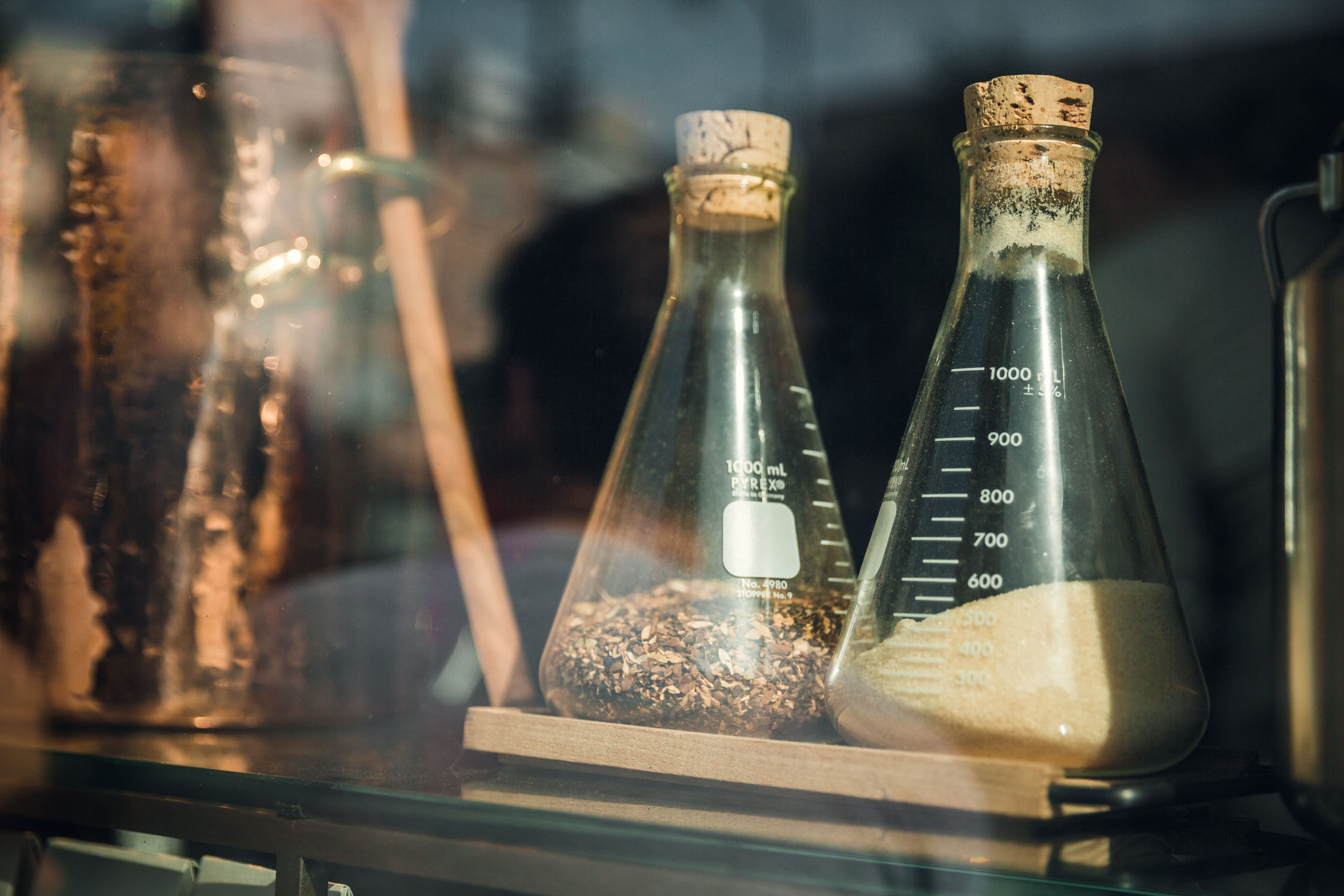
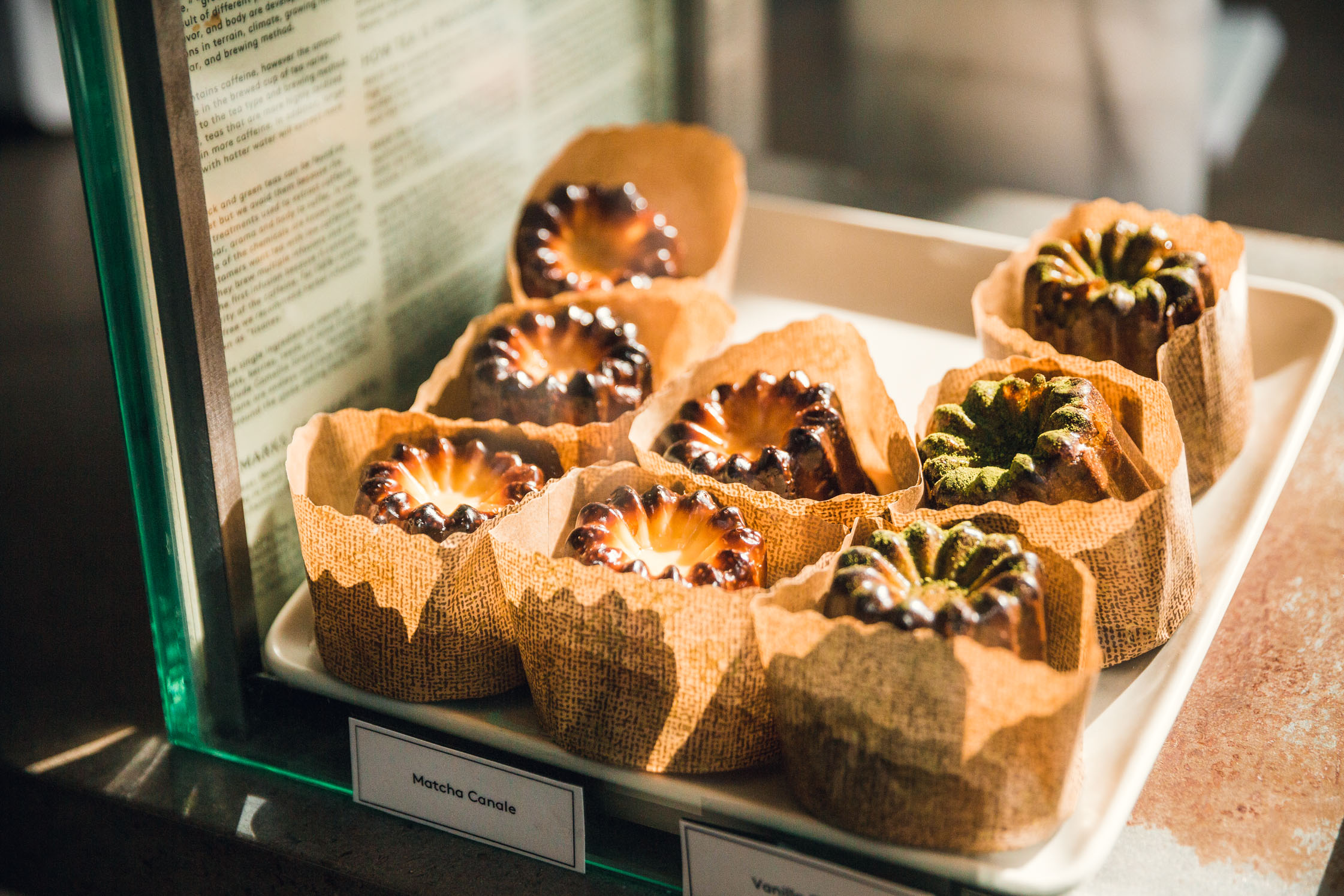
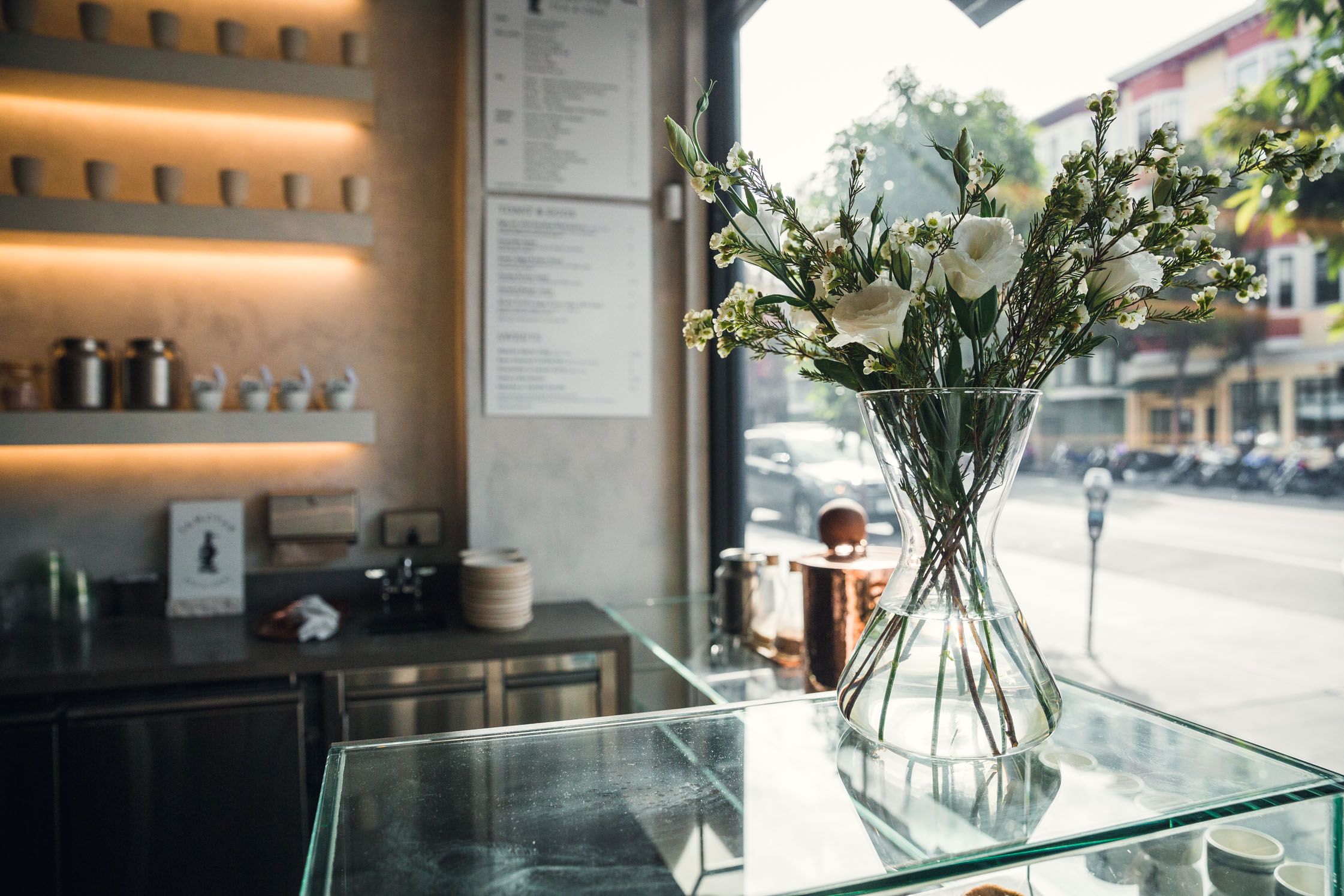
-
Tell me more about that.
I find the idea of a Japanese tea room very inspiring: an empty space where focused intention on one or two things stimulates your senses and brings you into the present moment. I asked myself how we could aspire to that state of emptiness, especially in a world where we’re so distracted and overwhelmed.
The basic idea was to cut everything away but still tie it together, which is why we chose the color white for the walls—it’s the epitome of emptiness, like a blank sheet of paper. When something is empty, it’s also full of fertile potential. The walls are hand-plastered because we wanted the artist’s touch to come through in every piece here. Nothing here is store-bought. Everything is made from natural materials, including concrete and limestone. We aimed for a feeling of lightness, so we installed cantilevered shelving and seating, which look like they’re floating off the walls. Also, it was important to us to expose the actual process, to show how tea is made, aligned with the notion of an open kitchen in a restaurant.
-
Silicon Valley champions efficiency and speed. You’re appealing to them, but you’re also a counterbalance to those values.
I’m not a Luddite—we use Square and Yelp and tablets, but we also want our tea to be accessible and utilitarian, to offer an easy entry point. So our tea has to be not only fast but also delicious. If you want to eat a meal and hang out for three hours, go to one of our other tea lounges. But here’s it’s a fine balance between slowing down and frictionless-ness. We’ve simplified the tea-making process so we can connect with people and focus on their experience, so they are not overwhelmed by choice while building tea into their daily routine.
-
The philosophy behind all this – is that also your own personal philosophy?
Yes, the very same. Besides what I already mentioned, another theme we incorporated in here was emphasizing analog aspects. In this digitized era, we are losing the connection with how things are made. The craft movement that has emerged makes us more human. We can connect with how things are made—that’s how I want to live my life. Yes, I have a Twitter account, but I also really enjoy the experience of making bread. I have a record player at home. I love hearing raw sound come out through a needle.
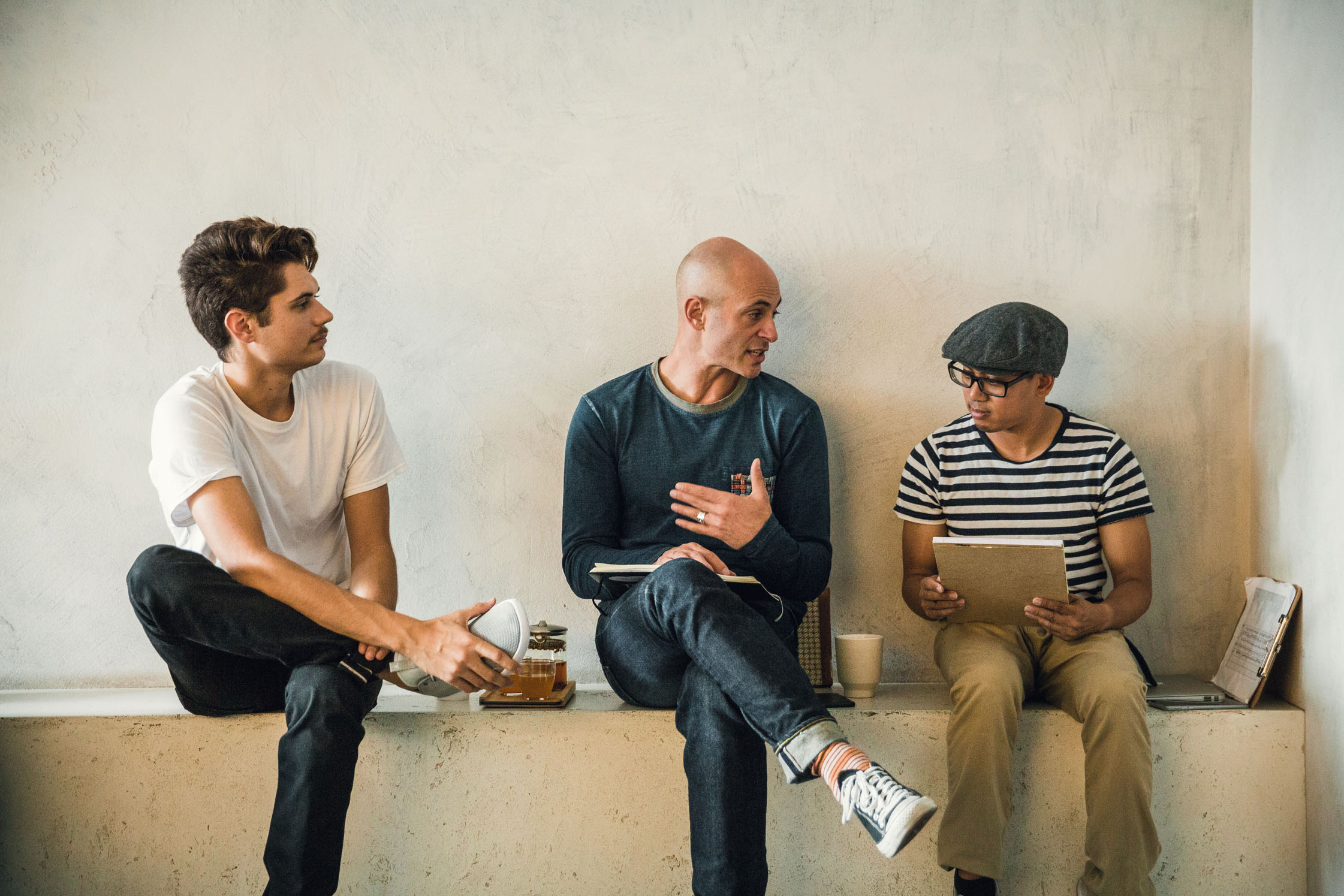
-
I noticed the term wabi sabi on your website. Could you explain that?
Wabi sabi means natural imperfection. The idea was to balance natural beauty and design in here. It’s supposed to be comfortable.
The other interesting concept that we adopted as a design tenet was the Japanese notion of nature-bathing, which is translated from the term shinrin-yoku. Studies have been done in Japan where neuroscientists took stressed-out businessmen into the woods—literally barefoot and touching a tree—and their blood pressure and heart rate went down. They were more creative. They had more alpha waves flowing through their brain.
In the urban fray we live in, we’re disconnected from nature, so we try to connect our customers to the natural world through the use of natural materials: limestone, wood, and even the tea and its raw leaves. We’re giving the people a little dose of shinrin-yoku.
-
Tea is a ritual. Do you have any personal daily rituals that keep you grounded?
I have a matcha shot every day. It’s a very easy, three-minute ritual that gets me into the present moment. I also drink herbal teas before bed. As for daily habits, I like to wake up at 4:44 AM. Somebody mentioned that number and it inspired me, so I thought, why not? I like to meditate, journal, and list out my top three priorities for the day. I also do body-weight style workouts which is sometimes called convict conditioning—the type of workouts you’d be able to do in a prison cell. And I enjoy having tea with other people.
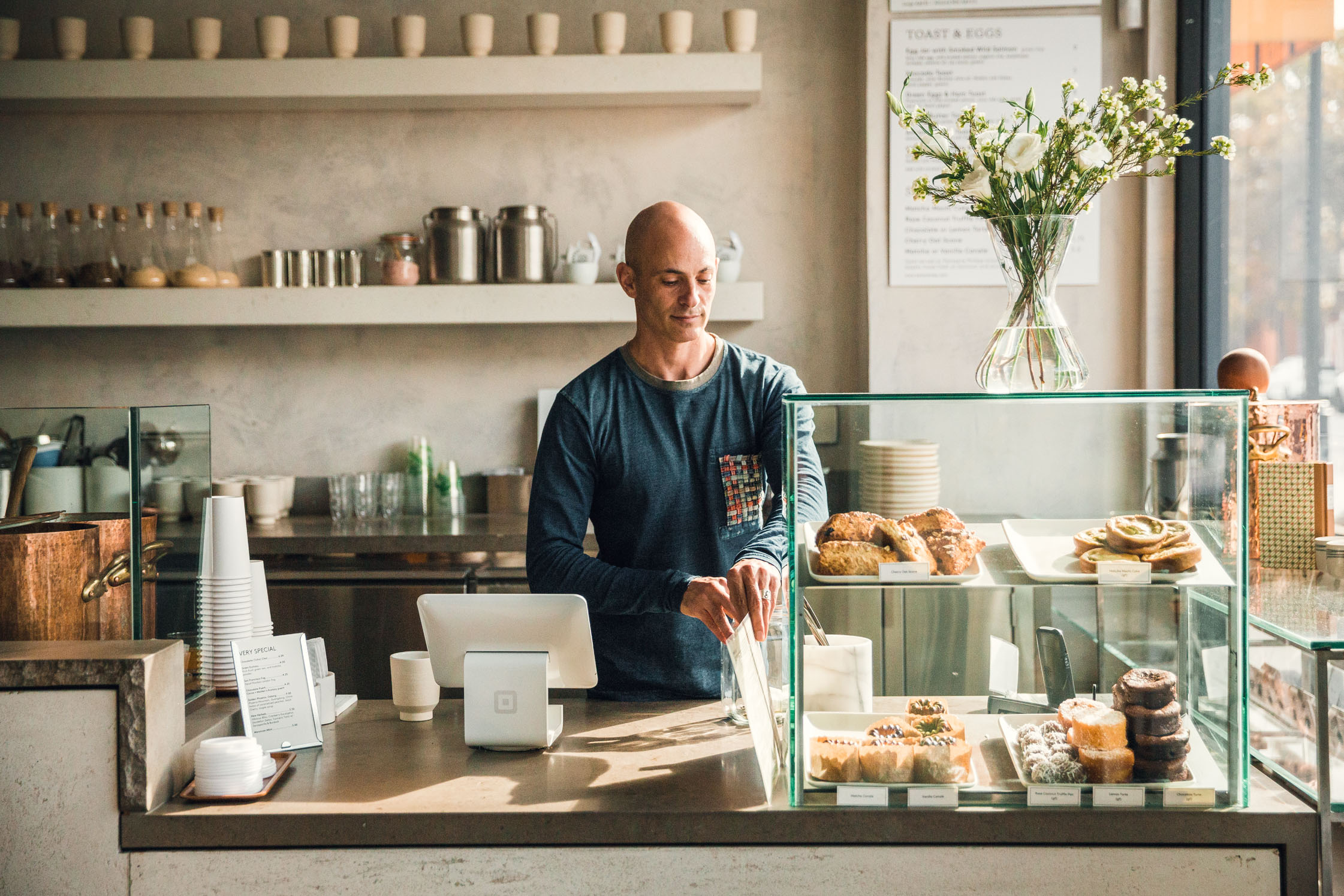
“Most people experience tea as a droopy, wet, cold tea bag. We want to show that tea actually has an inherent integrity and potency, a substantial nature.”
-
What inspires you? What are you passionate about?
The craft movement that’s going on inspires me. Self Edge inspires me. The guys at Huckberry and Taylor Stitch. I love all of our vendors and their products—especially our hemp aprons, which are hand-dyed and tea-stained, with leather and brass grommets. Matt Dick at Small Trade Company custom-made them for us. My staff inspire me because they are so radically passionate. I’m especially passionate about business, which for me, is about creating a magical moment in an alternate reality. I actually used to be a professional magician. I loved it.
-
How long ago was that?
Twenty years ago, in high school and college. I realized that with magic, people want to believe that there’s an alternate reality of suspended belief. Things are floating; things disappear into thin air. From the magician’s perspective, it’s awesome to experience that, but the reality is that there’s always a trick or gimmick, which is untrue or inauthentic.
The ultimate magic is alchemy, taking lead and turning it into gold. To me, business is the experience of alchemy. You take a mental synapse, an electrical impulse in your head—something that does not exist—and turn it into a reality that people can see, hear, touch and breathe. That’s real alchemy, and it’s incredibly inspiring to do and to be around people who are doing it. I can’t think of anything more nourishing than starting from an idea to seeing people come in here to eat and drink.
-
What do you love about being an entrepreneur?
I love the creative aspects of entrepreneurship. I think humans are designed to create. We’re at our best when we’re in a position to create. Life is now about curating. You don’t have to make a lot of money. You’re just choosing where to put your most valuable resource—your time. I choose to surround myself with things that have the most meaning, with people and stories.
